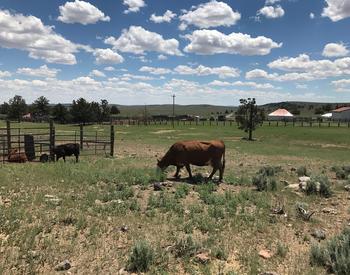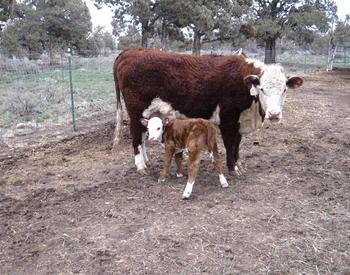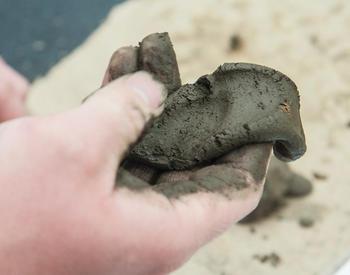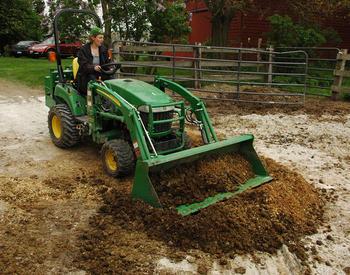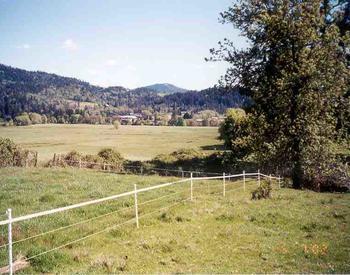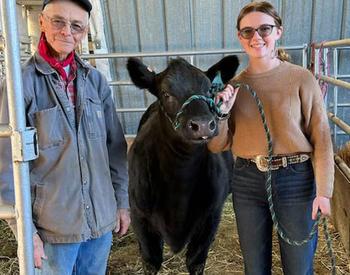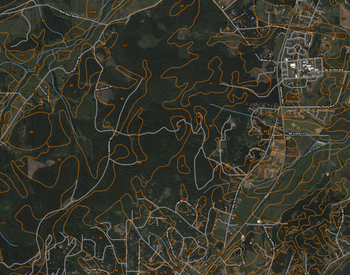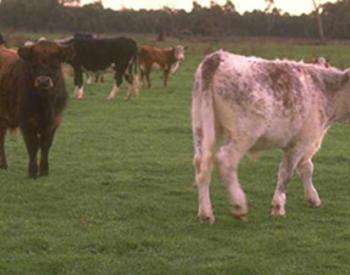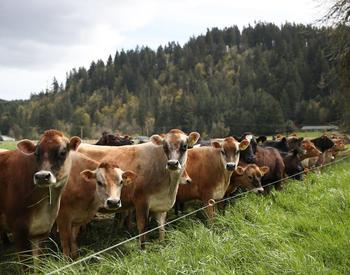Transcript
Welcome to living on the land. Your source of useful information for Eastern Oregon Country living. Brought to you by. Your Oregon State University Extension Service. Your animals can make a lot of manure. Your goal is to reap the benefits of manure while decreasing the risks. So what can you do? Here are five suggestions. The first suggestion is to drag your pastures. Pull a pasture Harrow, a piece of chain link fence or a set of iron bed springs behind a tractor truck or ATV's to break up piles of manure. Drag your fields at least once a year, ideally right after you move livestock from 1 pasture to the next as part of a rotational grazing system. Suggestion #2. Make it easier. To collect manure from all season pens. Manure is easiest to collect from a dry surface, all seasoned pan. You can improve the surface and reduce mud in permanent all season pens or corrals by replacing the top 6 to 8 inches of soil with a hard material like crushed rock. Hand wood chips or hog fuel. First, dig the soil out and line the bottom with a sturdy, non woven geotextile fabric. This keeps the material you're adding from mixing with the soil. Then fill with your material of choice. If you put sand on top of rock, separate them with another layer of geotextile. Suggestion #3. Spread your manure around. You can spread 1/4 to half inch of fresh or composted manure on pastures during dry weather when plants are actively growing. Be sure not to apply the manure too thickly. Because nutrients can contaminate water. And the excess nitrogen in some manure like that from poultry can burn crops. If you spread fresh manure on pastures, wait at least three weeks or longer before grazing. This reduces the chances of passing along parasites and pathogens to livestock. And wait three to four months after applying fresh manure before harvesting crops that humans will eat. Suggestion #4. Give your manure away or sell it advertised on the Internet or at garden and feed stores to let gardeners, farmers and commercial compost centers know that you have excess manure. Look from a newer exchange programs usually sponsored by your local soil and Water conservation district. And finally suggestion #5. Store your manure. Store your manure away from water sources and cover the pile when heavy rain is expected. The cover can be as simple as a tarp or as professional as a roof that's high enough for a tractor bucket. You can build sides around the collection area from concrete, wood, or other materials you have at hand. A concrete pad keeps nutrients from leaching into soil and makes it easier to use a tractor bucket. Put rock in the space in front of the pile to keep it from becoming a mud hole from all the foot traffic and tractor activity. Design the collection area to provide at least six months of storage. That way you won't have to spread manure or compost in winter on dormant or saturated pastures. Use separated bins so that the manure that's composting can mature while you start new piles. And moving piles from one bin to the next as oxygen. Which speeds up the composting process. Check with your local Planning Commission to find out if permits are needed before you build your storage structure. And contact your local soil and water conservation district for technical assistance. So let's review what to do with the Pooh. First, drag your pasture to break up existing piles of manure. Second, make it easier to collect manure from your all season pens. Spread manure around on pastures. Give your excess manure away or sell it. And finally. Store manure safely for future use. You've been listening to living on the land. For more details on managing manure, read the OSU extension publication, managing manure and contact your local Oregon State University Extension Service agent soil and Water Conservation District, or Oregon Department of Agriculture.
This podcast episode is part of the Living on the Land series. It provides concise information on the basics of livestock manure management, including handling, storage, composting, use, and ways to reduce negative effects on the environment. Particularly for the region east of the Cascade Mountains.
This is from the Living on the Land series. Download the related PDF - Living on the Land: Managing Manure
The phrase “Living on The Land” is used with permission from Living on The Land Stewardship for Small Acreage, © 2008, UNCE/WSARE.

